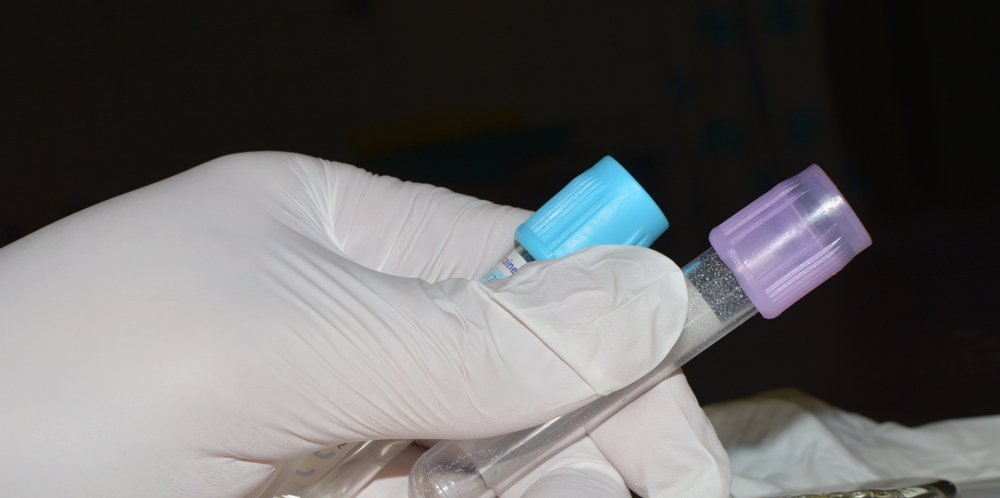The prevalence of ketamine use as an illicit substance has raised important questions about workplace safety and drug testing protocols. Many employers are turning to drug testing to ensure a safe environment; however, the reliability of ketamine drug test kits is still under scrutiny. Ketamine drug test kits can provide quick and reliable results, but their accuracy largely depends on factors such as sensitivity, specificity, and the timing of the test.
With the increasing popularity of ketamine among younger demographics, particularly in the UK, employers face the challenge of addressing substance use effectively. Implementing an appropriate testing strategy is critical for maintaining workplace integrity. For those seeking prompt results, an instant ketamine drug test with rapid results can be a valuable tool for detecting ketamine usage efficiently.
Understanding how these test kits work and their limitations can help organisations create informed policies. The growing landscape of mental health treatments also complicates the conversation around ketamine and its legal status, making it essential for employers to stay informed about best practices in drug testing.
Understanding Ketamine and Its Use
Ketamine is increasingly recognised for its unique effects and implications for workplace safety. Its properties and legal status play crucial roles in how it is perceived and managed in professional environments.
Properties of Ketamine
Ketamine is primarily known as an anaesthetic, but it also has properties that have rendered it a subject of interest in mental health treatment. It acts as an NMDA receptor antagonist, influencing glutamate neurotransmission, which has shown potential in alleviating severe depression.
Due to its rapid metabolism, ketamine can be quickly eliminated from the body. Detection of ketamine typically occurs through various drug testing methods, such as urine or blood tests. Hair tests can provide a longer detection window, as they can indicate use over several weeks.
The substance can induce dissociative effects, which may impair judgement and coordination. Given these characteristics, workplaces prioritising a drug-free environment must understand the potential risks associated with ketamine use.
Legal Status and Workplace Implications
The legal status of ketamine varies by jurisdiction. In many regions, it is classified as a controlled substance, which means its use is regulated. In medical settings, it is prescribed primarily for anaesthesia or treatment-resistant depression.
Employers must navigate the complexities of workplace policies regarding drug use. Implementing ketamine drug testing can help ensure compliance with health and safety regulations. It can also serve to protect the wellbeing of employees by minimising risks associated with impaired performance.
Workplace safety initiatives may be impacted by the presence of ketamine. Establishing clear policies helps to maintain a drug-free workplace and supports employees who may seek help for substance-related issues.
The Need for Drug Screening in the Workplace
Drug screening in the workplace serves as a critical measure for maintaining safety and productivity. It also addresses legal and ethical responsibilities of employers in ensuring a drug-free environment. These measures can mitigate risks associated with substance misuse and promote a culture of accountability.
Workplace Safety and Productivity
Ensuring a safe workplace is paramount for any organisation. Substance misuse can lead to impaired judgement, decreased alertness, and increased risk of accidents. A study has shown that employees under the influence of drugs are significantly more likely to engage in workplace accidents.
Implementing robust drug testing policies can deter substance use and encourage employees to remain drug-free. Regular screenings help identify individuals who may require support, thus maintaining productivity levels. Moreover, a safe workplace fosters employee morale and can reduce absenteeism and turnover rates.
Employers can choose from various testing methods, including saliva and urine tests, each with its own reliability and time frames. This flexibility allows companies to tailor their approach based on specific needs and workplace policies.
Legal and Ethical Considerations
Navigating the legal landscape of drug testing is essential for employers. They must comply with regulations that protect employee privacy rights while implementing drug testing protocols. Clear communication about the testing process and its rationale helps build trust between employers and employees.
Employers also face ethical considerations when enforcing drug testing policies. Striking a balance between maintaining a safe workplace and respecting individual rights is crucial. Properly handled, drug testing can be an effective tool for addressing substance misuse without infringing on personal liberties.
Adhering to industry standards and legal requirements can shield companies from potential lawsuits. This proactive approach can further reinforce a culture of respect and responsibility within the workplace.
Ketamine Drug Testing Methods
Ketamine drug testing employs various methods to detect its presence in individuals. Understanding the strengths and limitations of each method is crucial for workplaces considering anti-drug policies.
Urine Tests for Ketamine Detection
Urine tests are one of the most common methods for ketamine detection. They typically identify the substance for up to three days after use, depending on factors such as metabolism and frequency of use.
The test measures metabolites that indicate ketamine consumption, providing either positive or negative results. Detection kits often vary in sensitivity, which can affect accuracy. A cut-off value of 50 ng/mL is commonly used to confirm positive readings.
Safety and reliability are critical when implementing urine tests in a workplace. Employers should ensure that testing is performed under strict protocols to maintain the integrity of the results.
Saliva Tests: Efficacy and Convenience
Saliva tests offer a rapid and non-invasive alternative for detecting ketamine. This method is effective in identifying recent use, typically within 24 to 48 hours after consumption.
The testing process takes about 20-30 minutes, providing quick results that can be useful in emergency situations. Saliva tests require specialised kits that include ketamine as part of their testing panel.
While they offer convenience, the detection window is shorter than that of urine tests. However, saliva tests are particularly beneficial for assessing current impairment, making them suitable for workplace settings where immediate action may be necessary.
Hair Tests and Their Long Detection Window
Hair tests provide a longer detection window, identifying ketamine use from 90 days to several months after consumption. This method measures drug metabolites embedded in hair shafts, offering a historical perspective on drug use.
Although hair tests are less common for workplace screening, their ability to provide a comprehensive usage history can be valuable in certain situations. The testing process itself is straightforward, but it can take time to receive results.
Employers should note that external factors, such as hair treatments and environmental exposure, could affect outcomes. Thus, results may require corroboration with other testing methods for accuracy and reliability.
Ketamine Drug Test Kits
Ketamine drug test kits serve as essential tools for workplace screening. They come in various types and are designed to provide reliable results, often boasting high accuracy rates. Understanding the available options, their reliability, and the challenges in detection is crucial for effective monitoring.
Types of Ketamine Drug Test Kits Available
There are primarily two types of ketamine drug test kits: urine and saliva tests.
- Urine Testing: This method often provides a longer detection window. Kits are available that can detect ketamine metabolites with a cut-off of 1000 ng/mL, typically achieving results in less than five minutes. They are suitable for professional use, with reported accuracy rates around 99%.
- Saliva Testing: These kits are effective for short-term detection, usually identifying recent use within a 24- to 48-hour window. They are particularly useful for on-site testing, offering a quick assessment of current impairment levels. Many saliva kits are designed to be user-friendly and do not require special training.
Assessing the Reliability of Drug Test Kits
The reliability of ketamine drug test kits is a vital consideration for employers. Most reputable kits have a high accuracy rate, with some claiming 99% reliability.
Employers should select kits that minimise the risk of false positives. This is particularly important in environments where drug use could affect safety and performance. It is advisable to choose kits endorsed by regulatory bodies or well-known manufacturers to ensure they meet stringent quality standards.
Each kit should come with clear instructions for accurate administration and interpretation of results.
Challenges in Ketamine Detection
Despite advancements in drug testing technology, challenges remain in accurately detecting ketamine use.
Saliva tests, while convenient, have a limited detection window. This can lead to missed detections for users who consume ketamine outside the testing timeframe.
Urine tests, although more inclusive, may be subject to dilution or tampering, potentially affecting accuracy. Employers must implement comprehensive testing protocols and consider confirmatory testing methods to validate initial results.
Maintaining up-to-date knowledge on drug testing products and techniques can further improve detection capabilities in workplace settings.
Drug Test Processing and Accuracy
Understanding the intricacies of the drug testing process is crucial for ensuring reliable outcomes. Accuracy plays a significant role in workplace screening, as it influences decision-making and employee welfare.
Understanding the Testing Process
The drug testing process typically begins with sample collection. Common methods include urine, saliva, and blood tests, each with specific protocols. For instance, saliva tests are advantageous as they can detect substances like ketamine within a short window, typically 24-48 hours after use.
After collection, the samples are sent to certified laboratories for analysis. Laboratories employ immunoassay techniques for initial screenings, which can identify the presence of ketamine. Positive results from this stage lead to confirmatory testing, often using gas chromatography-mass spectrometry (GC-MS) for heightened accuracy.
This dual-layered approach helps to ensure that the testing process is thorough and systematic, minimizing the likelihood of errors.
Accuracy and Reliability of Results
Accuracy is a critical factor in drug testing kits, with reputable products claiming a reliability of up to 99%. However, various factors can impact these outcomes. For example, user error during sample collection or handling may lead to inaccurate results.
Furthermore, false positives can occur. Certain substances or medications might trigger a positive result for ketamine, necessitating confirmatory testing. Labs achieve this through stringent protocols and advanced methodologies that help distinguish between actual drug use and incidental exposure.
It is essential for employers to understand these parameters and recognise that while testing kits provide significant insights, they should not be the sole determinant for employment decisions without appropriate follow-up.
Employee Privacy and Rights
Maintaining a balance between workplace safety and individual privacy is crucial in the context of drug testing. Employers are tasked with ensuring a safe environment, while employees have legitimate concerns regarding their privacy and rights during the testing process.
Balancing Safety and Privacy
Employers implement drug testing policies to safeguard workplace safety. However, these measures must not infringe on employees’ privacy rights.
Effective policies should:
- Clearly define the reasons for testing.
- Specify the substances being tested.
- Ensure that procedures are fair and consistent for all employees.
Conducting tests with respect to confidentiality is essential. Results should be handled discreetly, shared only with relevant personnel. Overly intrusive testing methods can harm employee morale and trust, making it vital for employers to balance safety needs with respect for privacy.
Support for Employees Undergoing Testing
Employees undergoing drug testing should receive adequate support. Knowledge about their rights regarding testing procedures empowers them to address concerns effectively.
Support can include:
- Comprehensive education about the drug testing policy.
- A clear channel for raising grievances related to testing.
- Access to counselling if drug use is an issue.
Employers should foster an environment where employees feel safe discussing their concerns without fear of repercussions. Understanding that employees have rights related to privacy and fair treatment is fundamental for maintaining a positive workplace culture.
Incorporating Drug Testing into Workplace Policies
Integrating drug testing into workplace policies is essential for maintaining a safe and productive environment. Clear guidelines help minimise legal risks and ensure employee compliance with drug-free initiatives. Effective policies should address key areas, such as developing clear testing protocols and outlining pre-employment and random testing procedures.
Developing Clear Testing Policies
It is vital for organisations to craft comprehensive drug testing policies that outline the expectations for all employees. These policies should explicitly state the rationale behind drug testing, emphasising the commitment to a drug-free workplace.
Employers should include details about substances being tested for, such as ketamine, and the methods used in testing. A clear communication strategy ensures all staff understand their rights and responsibilities regarding drug testing.
Consider including protocols for handling positive results and the support available for affected employees. This transparency can foster trust and promote a culture of safety within the workplace.
Pre-employment and Random Testing Procedures
Implementing pre-employment drug testing is a crucial step in ensuring a safe work environment. This process typically involves screening candidates for illegal substances, including ketamine. Candidates who test positive may be disqualified from employment, thus maintaining a drug-free workplace from the outset.
Random testing procedures should be established to ensure ongoing compliance among current employees. These tests can serve as a deterrent to drug use and can be conducted without prior notice. Employers should define the frequency and method of random testing, balancing effectiveness with employee rights.
All procedures should comply with relevant laws and regulations to maintain legality and avoid potential discrimination claims. Clear documentation and records management are essential to uphold the integrity of the testing process.
Support and Resources for Employers
Employers require solid support and resources to ensure effective drug screening practices, particularly when it comes to ketamine testing. The following sections highlight critical aspects of selecting reliable test kits, engaging with vendors, and obtaining customer support for drug testing products.
Choosing Reliable Test Kits and Vendors
Selecting a reliable test kit is essential for accurate results in workplace screening. Employers should seek kits that are specifically designed to detect ketamine alongside other substances. It is crucial to review the UK Drug Testing options that offer a range of combinations for various drug groups.
Before committing, employers should investigate vendors’ reputations through customer reviews and testimonials. They must ensure that the kits comply with UK regulations and have undergone validation studies for accuracy. Compare the sensitivity and specificity rates of different products. Some vendors provide kits that can detect multiple substances simultaneously, which may be beneficial for employers in heavy industry or aviation sectors.
Customer Support for Drug Testing Products
Engaging with vendors that provide comprehensive customer support can ease the implementation process of drug testing products. Employers should ensure that the support team is knowledgeable about the specific requirements for ketamine testing. Reliable support should include training materials, FAQs, and helplines for real-time assistance.
Additionally, a good vendor should offer guidance on interpreting results and implementing best practices for sample collection. This can include insights into maintaining confidentiality and complying with workplace regulations. Ensuring robust customer support can enhance the effectiveness of a drug testing programme and maintain workplace safety.







